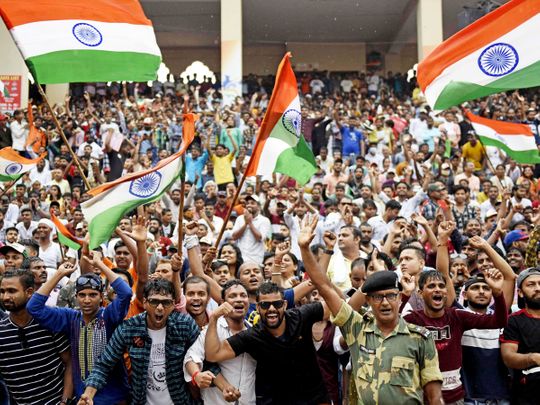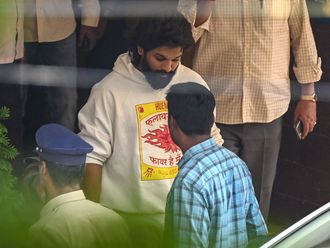
India’s Independence Day, 15 August, remains an occasion for celebration and reflection, even 77 years after 1947, when it gained freedom from British colonial rule. This day is significant not only to Indians in India and around the world, but also for the world itself.
Why? Because, as Raja Rao famously put it in The Meaning of India, “India is not a country (desa), it is a perspective (darsana).” What, then, does India stand for? Raja Rao takes us through descriptions by foreign travellers and envoys across the ages before he answers.
He recalls what the ancient Greek ambassador Megasthenes, sent by King Seleucus I Nicator, said as far back as 300 BCE in his now-lost classic Indika. Although the original text is lost, its fragments survive in quotations by Diodorus Siculus, Eratosthenes, Strabo, Pliny, and most notably, Arrian.
“They live happily,” says Megasthenes, “because they are simple in their ways, and because they practise frugality. They never drink wine, except at sacrificial ceremonies. The simplicity of their legislation and their contracts is proved by the fact that they never go to the court of law ... They equally esteem sincerity and virtue.”
A glorious civilisation
Jump a thousand years — what is time for those who have always tried to transcend temporality? The great Chinese traveller-savant Hsuan-tsang, now known as Xuanzang, came to India, studied at Nalanda, and collected hundreds of books to take back to his own country.
Raja Rao recalls Xuanzang’s observation: “Indians are distinguished by the straightforwardness and honesty of their character. With regard to riches, they never take anything unjustly; with regard to justice, they make even excessive concessions.”
Raja Rao then skips four centuries to a savant we have nearly forgotten: Idrisi (Abu Abdallah Mahommed Ibn Mahommed Ibn Abdallah Ibn Idrisi, 1099‑1154 CE). An adviser to King Roger II of Sicily, Idrisi was tasked with updating the world map.
He sent scouts and geographers across the globe. Of India, he writes, “The Indians are naturally inclined to justice, and never depart from it in their functions. Their good faith, honesty, and fidelity to their engagements are well known, and they are so famous for these qualities that people flock to their country from every side.”
Next, Raja Rao quotes Domingo Paes, who was in Portuguese Goa and left a vivid account of King Krishnadevaraya’s Vijayanagara around 1520-22. He describes the magnificent city in great detail, including its walls, gates, temples, and colonnaded bazaar.
But it is the rich, bejewelled women who dazzle him the most: “Who can fitly describe the great riches the women carry on their persons? Collars of gold with so many diamonds and rubies and pearls, bracelets on their arms, girdles below, and anklets on their feet.”
Truth of India
Raja Rao then quotes Ralph Fitch (1550—1611), the gentleman-merchant who travelled to India via the Middle East, reaching the court of the Mughal emperor Akbar. He writes of how both Fatehpur Sikri and Agra are “much greater than London and very populous,” with bazaars teeming with merchandise from Persia, and out of India, with much merchandise of silk, cloth, and precious stones, including rubies, diamonds, and pearls.”
From the colonial period, Raja Rao cites Max Muller, the great German Indologist: “If I were asked under what sky the human mind has most fully developed some of its choicest gifts, has most deeply pondered on the greatest problems of life and had found solutions to some of them, I should point to India.”
But for Raja Rao, India’s greatness lies not in these accolades. He makes a powerful and startling argument: “This exaltation for India ... is not an indication by any means of the truth of India, but of the need for an India.”
In other words, even if such an India as has been spoken of throughout the ages did not really exist, we would have to invent it.
Why? Because, says Raja Rao, “Look, the universe is burning!” But this fire is not just something external to us, out there, because of wars, geopolitical or economic instability. “For every sense perception is afire.”
What is the way out? “There can be no world without duality,” acknowledges Raja Rao, “yet there can be no peace in duality.”
India is great because, says Raja Rao, it is the land of sacrifice. Only sacrifice can show the way to peace and bliss.
How?
When the five senses that are on fire are sacrificed, then the sixth sense — the sense of unity with the Divine, with all creation, including the human world — can arise.
“Therefore, when the senses and the mind are ‘sacrificed,’ one lives in the undivided Pure Consciousness which is one’s true nature.”
If such an India did not exist as a real place, a real nation, a real republic, we would still have to imagine it. Somewhere on earth. But above all, within ourselves.
For such an India, Mahatma Gandhi, who fought British colonialism, used the word sudharo, the natural flow of human progress.
Gandhi declared, “The tendency of Indian civilisation is to elevate the moral being; that of Western civilisation is to propagate immorality.” By Western civilisation, Gandhi meant modernity itself. He wanted India to be free not only from political domination but from the intellectual, cultural, and spiritual slavery that modernity imposes.
Modernity cannot be overturned by the violence of counter-modernity, but only by wisdom in action.
To understand this is to have discovered the meaning of India.












